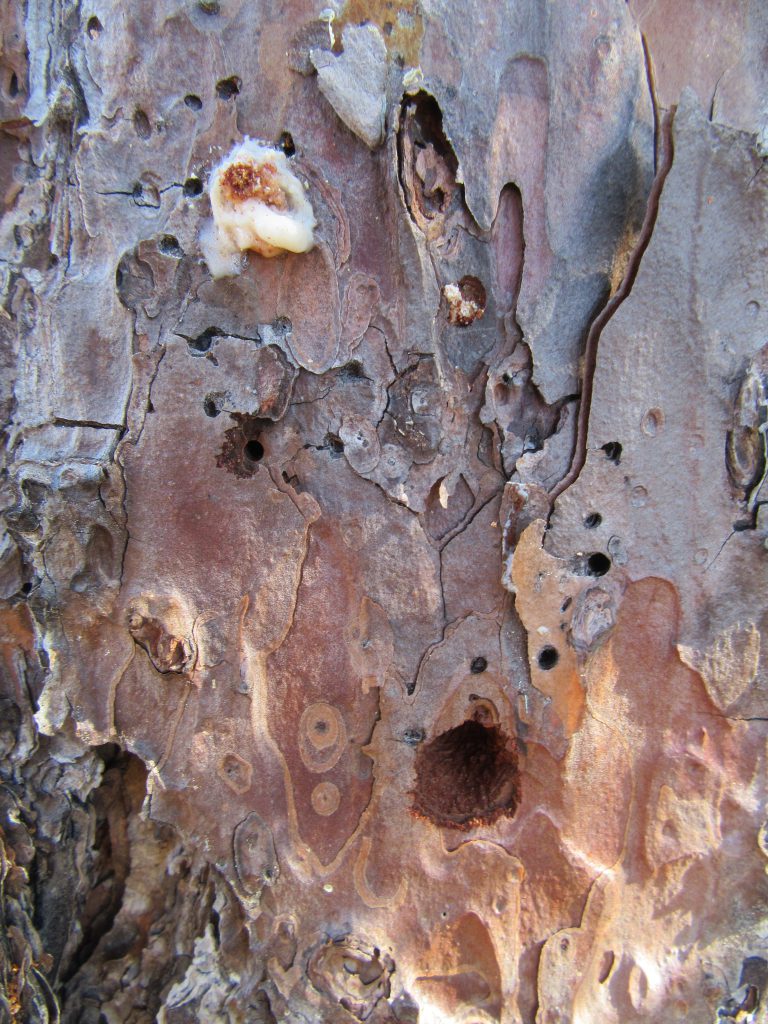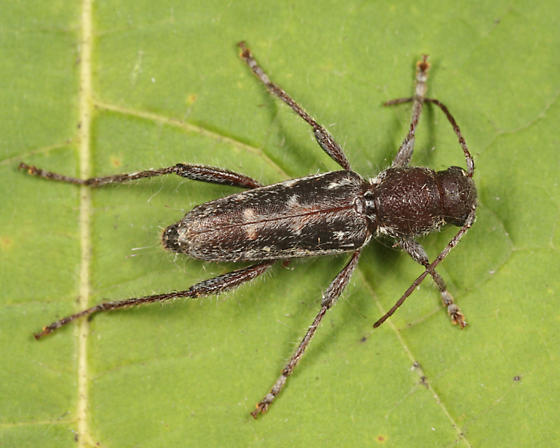Sometimes you don’t realize a tree is dying until it is dead. A few weeks ago, we got a call from a client who said he had insects killing his trees. Before having someone drive out to the property, our Master Gardener volunteer recommended that the client bring in some of the insects for us to take a look. It turned out the insects invading his pine tree were a type of longhorned beetle, but more specimens were required for identification. A site visit soon ensued.
There were a number of pine trees on the property, however only one was infested with the insects in question. Upon closer investigation, we noticed a number of different sized holes in the tree. The larger holes are nearly the size of a dime.
It turns out the insects making the larger holes are a type of longhorned beetle known as an arrowhead borer (Xylotrechus sagittatus). The borers are brown to black in color with a reddish hue. They are moderately hairy and some specimens contain arrowhead markings pointing toward their heads. Adults feed on the bark of damaged or fire-killed pines. The adults are attracted to lights and may be mistaken for crickets because they run very fast. Eggs are laid in bark and larvae feed on sapwood, then tunnel deeper, often tunneling within a single annual ring. The borers pupate inside the tree and the newly emerged adults chew their way out.
Given the fact that arrowhead borers are attracted to dead or dying trees, the killer of this particular tree is still in question. The smaller holes in the bark picture above were created by a much smaller beetle, but we were unable to get a specimen. We did see a couple of these beetles running around when we dug deeper into the bark. The small beetles that we saw closely resembled a type of Ips engraver beetle. Beetles in this genus have been known to kill trees, but most likely they weren’t the culprits either. Based on the overall appearance of the tree and the fact that other trees in the area were not infested with beetles, it is believed the tree was killed by other means. The tree was likely struck by lightening or suffered from poor genetics because it did not have a good form for a pine tree.
If you have a questionable looking tree on your property or if you have insects you would like identified, please feel free to stop by your local Extension Office and ask a Master Gardener!
- Gardening in the Panhandle LIVE! Program Summary: Pests of Florida Lawns and Landscape Plants - May 28, 2025
- Fun Facts About Ferns - April 30, 2025
- Gardening in the Panhandle LIVE! Program Summary: Freeze Friendly Foliage Plants - April 30, 2025


